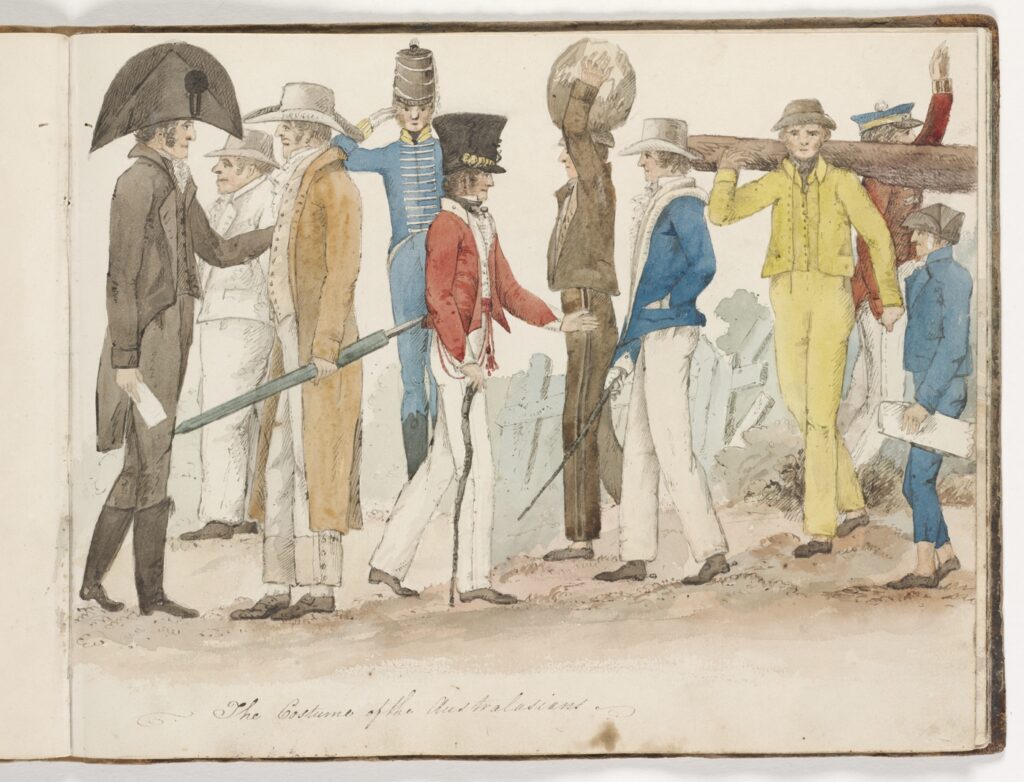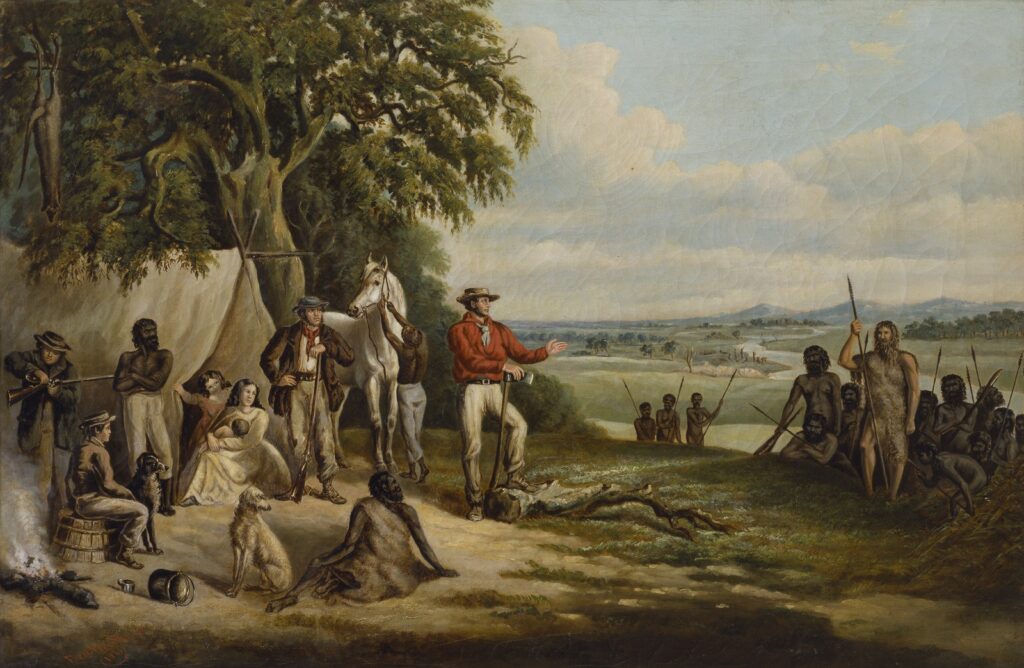Legal historians often look for legal change in spaces ordained for that purpose. Legislative chambers and courtrooms contain the opinions of legislators, the pronouncements of judges, and arguments of solicitors and barristers. They are spaces sanctioned to test a law’s validity, and for its creation, enactment and amendment. But law is not confined to these spaces alone. Legal change is often precipitated by events ‘on the ground’. Although the law is often cast by its practitioners as a self-referential system based on precedent, it is also a field that looks outward. The law is deeply embedded in establishing social orders and maintaining them. This was particularly true of the law in early settler colonies.
In settler colonies, the stakes were high. Colonisers claimed Indigenous land. They sought to create new, permanent societies in the lands they colonised, and the law was one of many mechanisms used to shore up the colonial project and respond to the needs of colonists at the edge of empire. Despite sharing these foundational elements, settler colonies were not all the same. Different experiences with race, class, gender and real or perceived criminality affected the needs of settler governments on the ground.
In my article, “Protecting the Colony from its People: Bushranging, Vagrancy and Social Control in Colonial New South Wales,” (Law and History Review vol. 40, no. 4 (Nov., 2022): 655-77) I argue that rather than a select criminal contingent, the New South Wales’ authorities increasingly feared that the composition of the colony threatened their colonial enterprise. Convicts, emancipists, free settlers of the lower orders and Aboriginal people were all seen to endanger the nascent colony as they committed (and had the potential to further commit) acts of theft, mass unrest and insurrection. The Bushranging Act of 1830 and the Vagrancy Act of 1835 contained wide coercive and discretionary powers to mitigate the extent of this threat.[1] The Bushranging and the Vagrancy Acts were forms of social control that together sought to safeguard the colony from its own population, as well as managing the transition of New South Wales from a penal colony to a colony of free settlers. They were weapons in the colony’s arsenal to combat crime, but also complicit in more insidious forms of settler state building and colonial population control.

These colonial statutes were large legislative interventions and I use them to make similarly large scholarly claims. But these big revelations came from something small. I would not have connected these statutes or thought through the implications of their enactment had it not been for a serendipitous archival encounter with one instance of frontier violence.
I was investigating the life of a Worimi, Aboriginal bushranger (Australian bandit) named Mary Ann Bugg when I came across an obscure reference about her early childhood. Her white, convict father had been attacked in 1835 by Aboriginal people, and her Aboriginal mother had stepped in to save her partner by discharging a gun at the assailants. As I looked deeper into this case, I realised that this instance of violence was not alone. It was one of several such cases of coordinated raids conducted by Aboriginal people in the area at this time.
The colonial newsmen who reported these attacks refused to believe they had been orchestrated by Aboriginal people—the raids were apparently too well organised to have been created by people perceived as ‘savages’. Instead (and with virtually no evidence to support these claims) papers began to run stories that it was a white bushranger who had led Aboriginal people to attack. The press cast this interaction between a nefarious, free white man and Aboriginal people as emblematic of the danger of interracial encounters and argued that it necessitated a colonial vagrancy statute.

This piqued my interest. Colonists were speaking about bushranging and vagrancy in new and interesting ways. It was curious that colonists overlooked the Bushranging Act of 1830 and demanded a vagrancy statute to deal with an issue framed as the work of a white bushranger.
My research had started by charting colonial violence but by expanding my frame of reference ever so slightly, I was able to see how colonists believed the law should be employed to remedy unrest on the frontier. Colonial material on frontier conflict—such as the reports of JPs and the memos of police, popular newspaper reports and editorials—then directed my research in the judicial and legislative arena. There, heated discussions about emergency powers, the suspension of legal safeguards and divergence from the laws of England abounded in relation to the Bushranging Act. The Vagrancy Act was passed swiftly after the Aboriginal attacks of 1835 with little fanfare. Regarding each statute’s creation and enactment alongside the other provided a hidden view of law, order and social control in colonial New South Wales. It showcased the segments of colonial society the government protected and those it feared, while the wide discretionary powers of each statute revealed legislators’ belief in the extent of the emergency before them.
It would have been possible to write the history of the Bushranging Act and the Vagrancy Act differently. If my entry point to these statutes had been through legislative chambers I would have seen legal discourse, but something crucial would have been missing. It was only by beginning on the ground that I could clearly see the connections between bushranging and vagrancy law. Having a moment of encounter on the frontier as my entry point to this history also made the stakes of this law abundantly clear. A unique confluence of the penal, free settler and settler colonial concerns influenced the development of these pieces of legislation, and legal discussions about them were spurred on by very real pressures from outside of the hallowed halls of colonial justice. The Bushranging Act and the Vagrancy Act were legislated to prevent mass unrest and protect the colony of New South Wales from its own people. Elite gentlemen and wigged justices were not the only ones to instigate legal change. Frontier warfare and settler experience could also precipitate vast changes in law.
[1] Bushranging Act 1830 (NSW), 11 Geo. IV No. 10; Vagrancy Act 1835 (NSW), 6 Will. IV No. 6.

